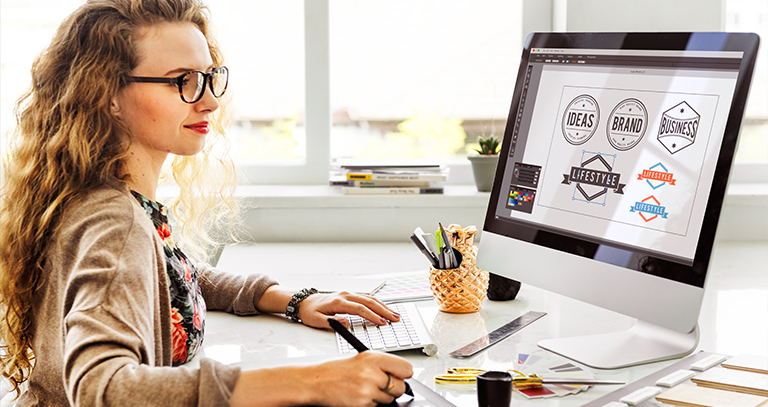Let’s dive a little deeper into what all of this really means. Marketing and design need to go hand in hand.
Why?
Because through marketing, you create interest in your brand, and design helps you visually communicate your brand.
Despite this apparent connection between graphic design and marketing, in some companies, there’s still a disconnect between the two. Before there even is a marketing strategy, you need to start with the basics, meaning the brand guidelines. These represent the baseline for every marketing material that the design team will be creating. Without the guidelines, it’s going to be hard for your company to communicate consistently. At the same time, great design marketing is more than just your company’s logo, font, page layout, or images you use.
It’s the bridge that connects your brand to your customers, and it also acts as a confidence builder. If you think about it, in many ways, the design represents the face of your brand, so it isn’t just about using stunning images and cool graphics.
In marketing, you can write clear copy and do targeting the best way you can, but in the end, if it doesn’t perform, it can’t be called a success. Similarly, when we talk about design, you can create a stunning ad, but if it doesn’t end up converting people, then it doesn’t really matter. That’s why smart marketing needs to be combined with great design.
“3 Top Benefits of Great Marketing Graphic Design”
1. Increases conversions
Beautiful marketing design has the potential of motivating people to take action by providing a clear, easy path to conversion. For example, you can see in the image below the difference great design can make when creating a call to action button. The important thing is that at every stage of your marketing campaign, you need to think about how to create engagement with your audience and then how to convert engagement into the desired outcome. You have to ask yourself how to turn a call to action into an actual sale and how you can create a brand experience out of digital marketing design. Ultimately, the design is responsible for creating an emotional response from your audience.
2.Builds trust
Great design can reduce the anxiety that people may have towards converting. This can be done by addressing the fears and concerns someone may have around the product or service you’re advertising for. For example, you can talk about the type of material the product is made out of, whether people can return it, or if they can test it out in person before buying it.
3. It provides an incentive
To encourage consumers to use your product or service, it helps if you showcase them in context. More specifically, your audience needs to see how you can help them fix a problem they’re having or how it can bring them joy. By viewing the product in context, a person can visualize much more quickly whether it can work for them and their current lifestyle





